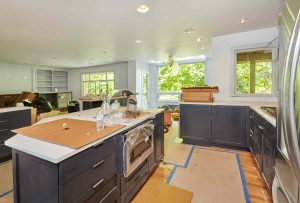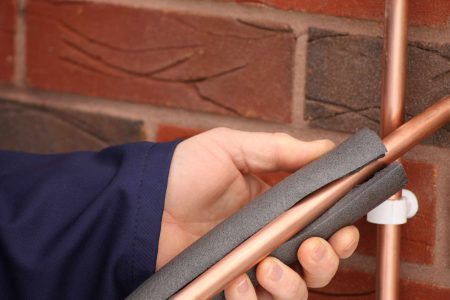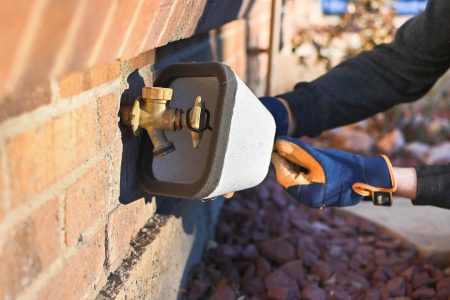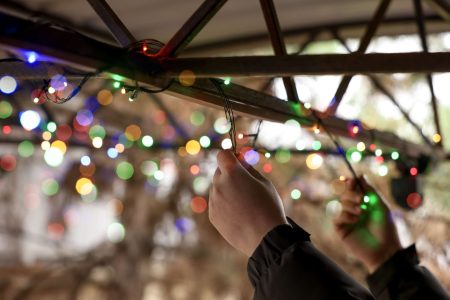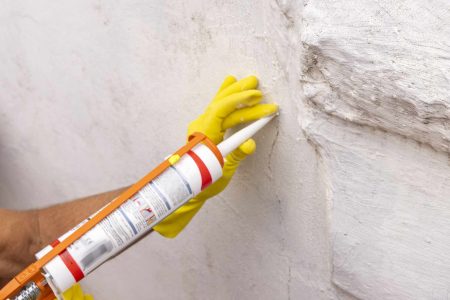During a new installation of lawn sprinklers or irrigation pipes, joints are normally completed using solvent-cement fittings. This becomes less practical, though, if you are trying to replace a broken segment of pipe when the rest of the lines are already in place. In this situation, there simply is not enough slack to easily insert replacement pipes and glue them in place.
A good option, in this case, is to use a PVC compression fitting. This fitting seals by squeezing washers tightly against the pipes, and it requires no measuring or gluing to use. All that’s necessary is to cut away the bad section of pipe and insert a compression fitting to replace the bad section. If the damage involves a large section of pipe, you can make the repair with a length of replacement pipe and two compression fittings to join each end of the repair segment to the existing system.
What You’ll Need
Equipment / Tools
- Hacksaw or reciprocating saw
- Utility knife
- 2 Channel-type pliers
- Rag
Materials
- PVC compression coupling
Instructions
-
Gather Your Supplies
Buy a repair coupling that matches the diameter of your sprinkler pipe. Couplings are commonly sold at home centers and irrigation supply dealers. Cutting the pipe is easy enough with a small hacksaw, but a reciprocating saw with a short, fine-tooth blade makes the job quicker.
-
Prepare the Pipe
Cut a small gap out of the broken pipe, about 1 inch wide, to make room for the compression coupling. Remove the burrs from the cut edges with a utility knife, then clean the ends of the pipe with a rag.
-
Position the Slip Nuts and Washers
Remove both ends of the compression coupling. Slip one compression nut over each exposed end of the pipe, with the threaded socket pointing toward the gap in the pipe. Next, slip a rubber washer over each exposed end of the pipe, after the compression nut.
-
Align the Coupling
Slide the compression coupling onto the pipe. Align the center of the coupling over the gap in the pipe.
-
Slide the Washers and Nuts Into Place
While holding the coupling with one hand, first slide the compression washer, then the nut, onto each end of the coupling. Thread the nuts loosely onto the threaded ends of the fitting.
-
Tighten the Coupling and Check the Seal
Use one set of channel-type pliers to hold the center of the coupling in place, while using the second set of pliers to tighten each compression nut onto the filling. Be careful to not over-tighten; it is very easy to break the compression nut if you use too much force.
Turn on the water and check for leaks. If you spot seeping, tight the nuts just slightly more. Once you are confident that the joint is not leaking, fill in the excavation to bury the pipe.
Read the full article here
